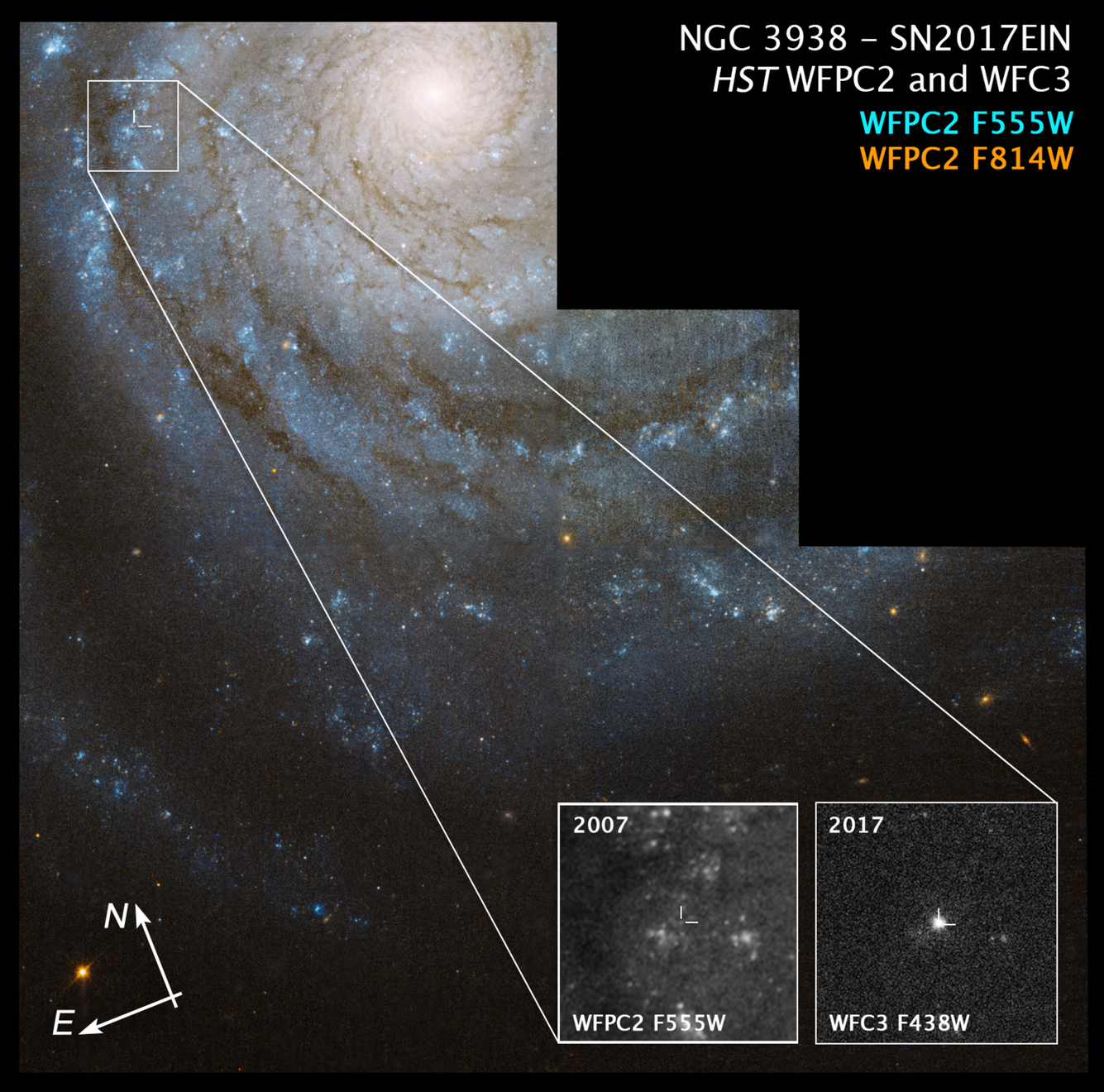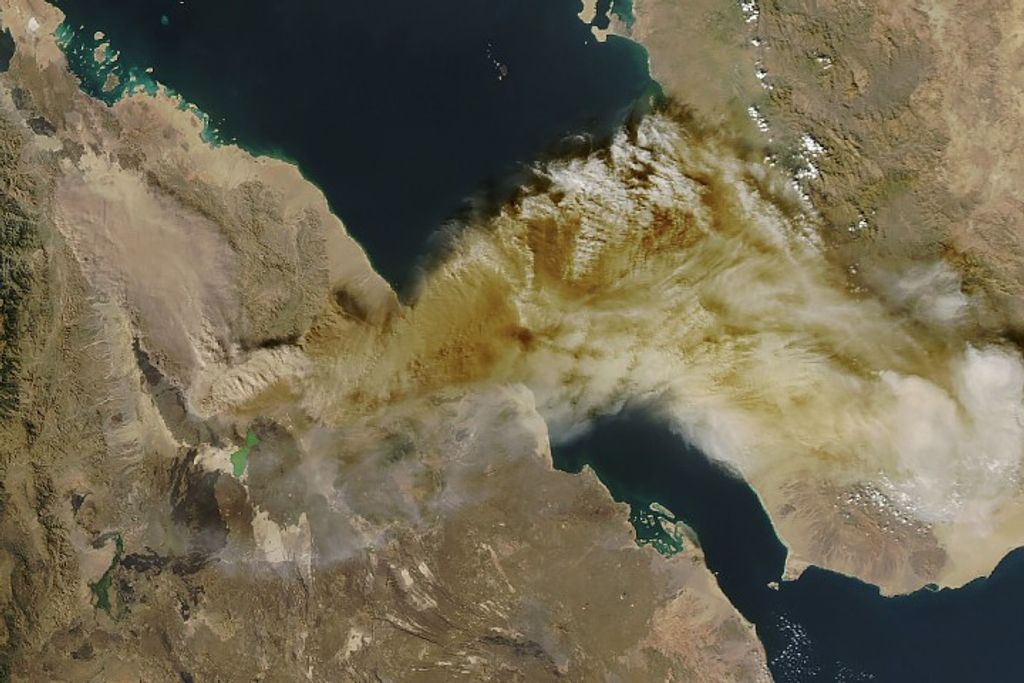1 min read
SN 2017ein in NGC 3938

Astronomers Find a Supernova's Progenitor Star in Hubble Images
This NASA Hubble Space Telescope image of the nearby spiral galaxy NGC 3938 shows the location of supernova 2017ein, in a spiral arm near the bright core. The exploded star is a Type Ic supernova, thought to detonate after its massive star has shed or been stripped of its outer layers of hydrogen and helium.
Progenitor stars to Type Ic supernovas have been hard to find. But astronomers sifting through Hubble archival images may have uncovered the star that detonated as supernova 2017ein. The location of the candidate progenitor star is shown in the pullout box at bottom left, taken in 2007. The bright object in the box at bottom right is a close-up image of the supernova, taken by Hubble in 2017, shortly after the stellar blast.
NGC 3938 resides 65 million light-years away in the constellation Ursa Major. The Hubble image of NGC 3938 was taken in 2007.
About the Object
- R.A. PositionR.A. PositionRight ascension – analogous to longitude – is one component of an object's position.11:52:53.19
- Dec. PositionDec. PositionDeclination – analogous to latitude – is one component of an object's position.+44:07:25.63
- ConstellationConstellationOne of 88 recognized regions of the celestial sphere in which the object appears.Ursa Major
- DistanceDistanceThe physical distance from Earth to the astronomical object. Distances within our solar system are usually measured in Astronomical Units (AU). Distances between stars are usually measured in light-years. Interstellar distances can also be measured in parsecs.NGC 3938 is located 65 million light-years away from Earth.
- DimensionsDimensionsThe physical size of the object or the apparent angle it subtends on the sky.Image is about 2.5 arcmin across (31,000 light-years).
About the Data
- Data DescriptionData DescriptionProposal: A description of the observations, their scientific justification, and the links to the data available in the science archive.
Science Team: The astronomers who planned the observations and analyzed the data. "PI" refers to the Principal Investigator. - InstrumentInstrumentThe science instrument used to produce the data.WFPC2, WFC3
- Exposure DatesExposure DatesThe date(s) that the telescope made its observations and the total exposure time.April 2007 and June 2017
- FiltersFiltersThe camera filters that were used in the science observations.WFPC2: F814W, F555W, WFC3: F438W
- Object NameObject NameA name or catalog number that astronomers use to identify an astronomical object.SN 2017ein in NGC 3938
- Object DescriptionObject DescriptionThe type of astronomical object.Progenitor of Type Ic supernova
- Release DateNovember 15, 2018
- Science ReleaseAstronomers Find Possible Elusive Star Behind Supernova
- Credit

These images are a composite of separate exposures acquired by the WFPC2 and WFC3 instruments on the Hubble Space Telescope. Several filters were used to sample narrow wavelength ranges. The color results from assigning different hues (colors) to each monochromatic (grayscale) image associated with an individual filter. In this case, the assigned colors are: Cyan: F555W Orange: F814W

Related Images & Videos

Artist's Illustration of SN 2017ein
Artist's Impression of Progenitor Star to a Type Ic Supernova This is an artist's concept of a blue supergiant star that once existed inside a cluster of young stars in the spiral galaxy NGC 3938, located 65 million light-years away. It exploded as a supernova in 2017, and...
Share
Details
Claire Andreoli
NASA’s Goddard Space Flight Center
Greenbelt, Maryland
claire.andreoli@nasa.gov
































